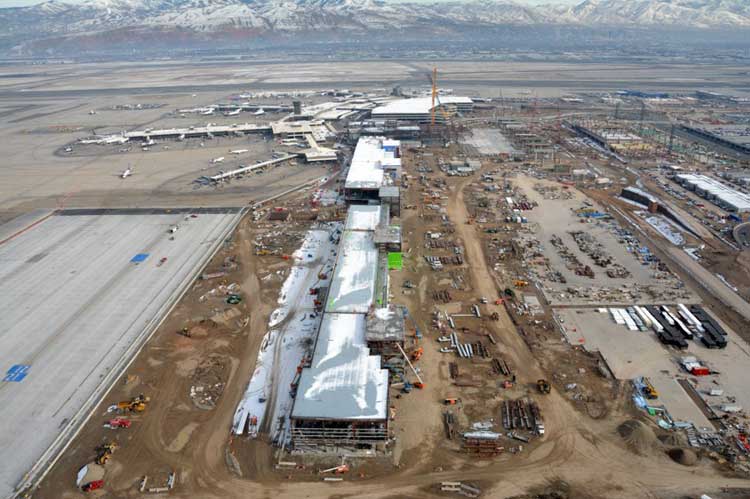
By Wesley Long
Some of the training mentioned in Part 2 can be applied in the following ways.
- Bleeding control: great for standard employee awareness.
- Tactical bleeding control: great for fire, EMS, and law enforcement.
- Run hide fight: employee, tenant, and stakeholder populations.
- Rescue Task Force: great for fire, EMS, law enforcement. This is increasing in popularity, recommended. I have established the first and currently only rescue task force in my community, so I have firsthand knowledge that it may be difficult in establishing but can potentially yield incredible results. Airports with their own law enforcement and fire/EMS are uniquely positioned to employ this strategy.
- Public awareness and education are a key components in using the public as a safety tool in intelligence gathering and survivability. Threat alerts are a good example of this as well as social media and how, in the right hands, it can be an incredible tool for the public information officer and even the emergency management coordinator responding to a terrorist event at one of our airports.
- Education is a wonderful tool on how to potentially identify what to look for in terms of improvised explosive devices. One of the biggest challenges to responding to bomb-related issues is not understanding the full extent of the response. Communication issues, technology concerns, vehicle and passenger positioning, availability of a bomb squad, and more are automatically major problems for the response team if the threat has not yet been detonated—and even worse for the response team if it has. For this to work, your required employee population needs an intimate understanding of the layout and design of your terminal and perhaps adjacent or shared facilities. What is not advisable is a published evacuation collection point for a bomb threat or a verified bomb. This information could be used by an insider threat for the nefarious purpose of secondary and tertiary bomb locations in an effort to achieve a greater kill count after the initial incident to include crippling on site and mutual aid emergency response forces.
Technologies
Some technologies that can assist in support follow.
- Human capital is our number one resource, but a technological component is of great help. Technology is continuing to evolve at a speed that is difficult to keep up with and is easier to implement with newer construction. Airport building design itself can prevent successful vehicle-born IED deployment by keeping vehicles away from mass gathering areas such as ticketing and baggage claim. Larger airports have a greater success in this already, but small and medium airports can suffer in this regard because of less geography to work with.
- Artificial intelligence (AI) is being designed for integration into airport security systems and promises the ability to determine behaviors and biorhythms that may be considered threatening. Smart tunnels are being implemented to streamline the passenger security process while keeping the flow of traffic moving through the terminal in a fast and efficient manner.
- Drones are being used for wildlife mitigation, perimeter and fence line checks, fuel farm line inspection, as well as emergency scene overview and safety. Maybe we can use this capability to track on scene security threats or hostiles while feeding intelligence to our law enforcement responders and medical teams.
- Emergency warning and egress systems can be seamlessly integrated into PA systems, advertisements, walls, and floors. The ability to detect real threats such as gunfire or explosions while tied into an AI construct can direct passengers away from the potential danger while considering the population that may have hearing or vision difficulties as well. This makes the response much more successful and the potential victim pool less.
- Communication structures are hampered the moment there is an event, so it is necessary to have failsafes in place. Do you have access to portable cell phone towers? Are there repeaters on each floor of your facility or better yet each emergency response vehicle? Does your mutual aid network have access to your communications frequencies?
Like it or not, 9/11 was an innovative attack on our airport security, on the U.S. national emergency response framework, our communication tactics, financial infrastructure, and much more. It takes the same level of innovative thinking to prepare your organization for the possibility of such chaos. Looking back, it is easy to see the misalignment in our infrastructure, our training, and our understanding of the length the enemy is willing to go to. It is absolutely imperative that we continue to think up the next big disaster in an effort to establish solutions for problems not yet considered. Granted there is only so much you can prepare for, but as Benjamin Franklin one said, “If you fail to plan, you are planning to fail.”
WESLEY LONG works at the Glacier Park International Airport as the fire chief, operations director and is a certified emergency manager, certified professional manager, ACE trusted agent, and Airport Security Coordinator. Prior to the 13 years he has worked at GPIA, he spent 10 years as a firefighter in the United States Air Force, spending six years in the Pacific Rim and four in Space Command.

